Family Mantidae - Praying Mantids

This family contains 80% of the Praying Mantids species find in Australia. Usually they are large in size. On their front arm, they have two rows of spines, which is different from a single row of the other families.
- Garden Praying Mantid
-
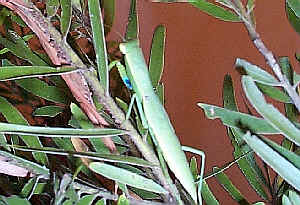
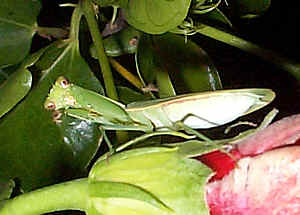
- Orthodera ministralis, subfamily Orthoderinae, nymph, female, both body length 40mm
- Garden Praying Mantids, one of the most commonly seen mantids in Brisbane, is green in colour with forewings covered all of its abdomen. Also notice the blue spots on their front legs. More information please click here.
- Large Brown Praying Mantid, Stick Mantid
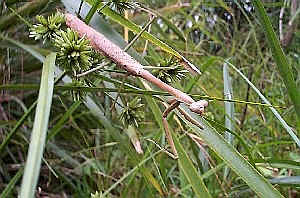
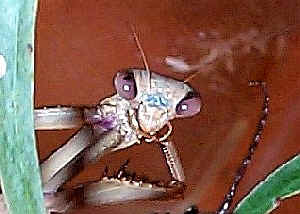
- Archimantis latistyla, subfamily Mantinae, body length 120mm
- This Praying Mantid is very common in Brisbane. This mantis is pale brown in colour and looks like a dry leave among the grass. There are two black dots on each side of its forewings. Praying Mantids have very good eye-sight and a flexible neck. For more information please click here.
- Purplewinged Mantid, Australian Mantid

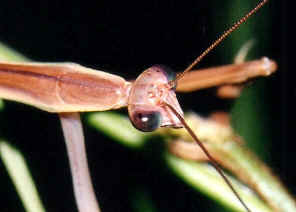
- Tenodera australasiae, subfamily Mantinae, body length 70mm
- The adults Purplewinged Mantids are large in size with long and narrow body. Their wings are purple to dark brown in colour, with grass green on both edges. Their heads and body are light brown with green colour eyes. More information and pictures in the Purplewinged Mantid page.
- False Garden Mantid


- Pseudomantis albofimbriata, subfamily Mantinae, body length 60mm
- We sometimes find this mantid hunting in our backyard. They are either green or light brown in colour. There is a dark spot on inner side of each of its fount arm. They are slow moving, with large abdomen. Their wings are relatively small and do not seems can fly. More information and pictures click here.
- Burying Mantid
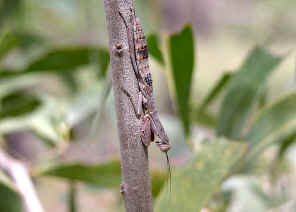

- Sphodropoda tristis, subfamily Mantinae, body length 60mm
- Pictures taken in Karawatha Forest during mid summer. When we came closer, it moved to the other side of the stem. The mantids are grey brown in colour. They are called Burying Mantids because females dig small hole in ground, usually sandy soil, in which they lay eggs and then refill it. More information and pictures can be found in this page.
Here we would like to thank Graham Milledge of Australian Museum for he had kindly sent us email on correcting some mistakes in this page.
